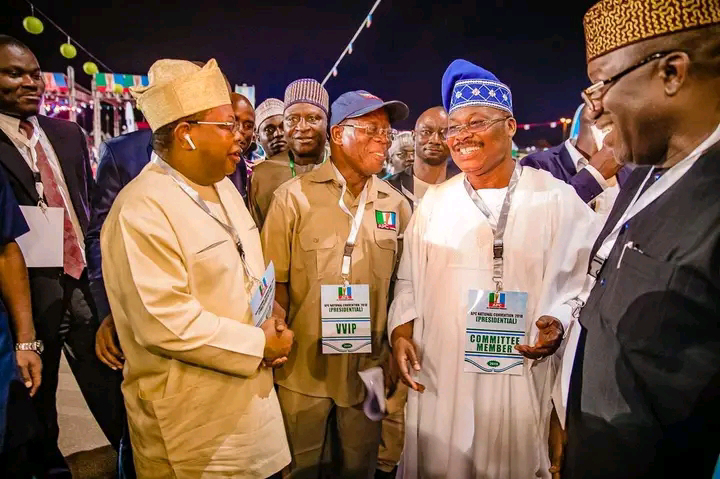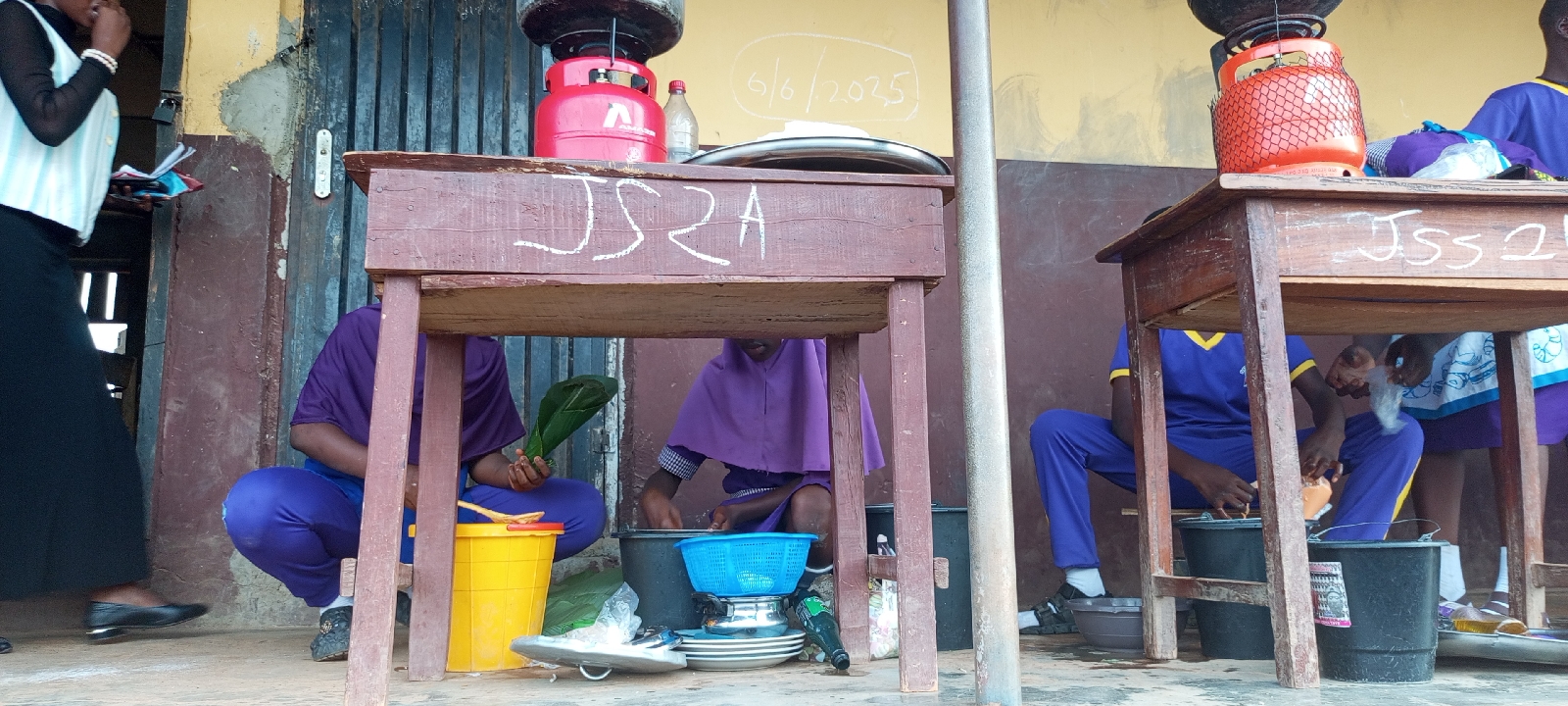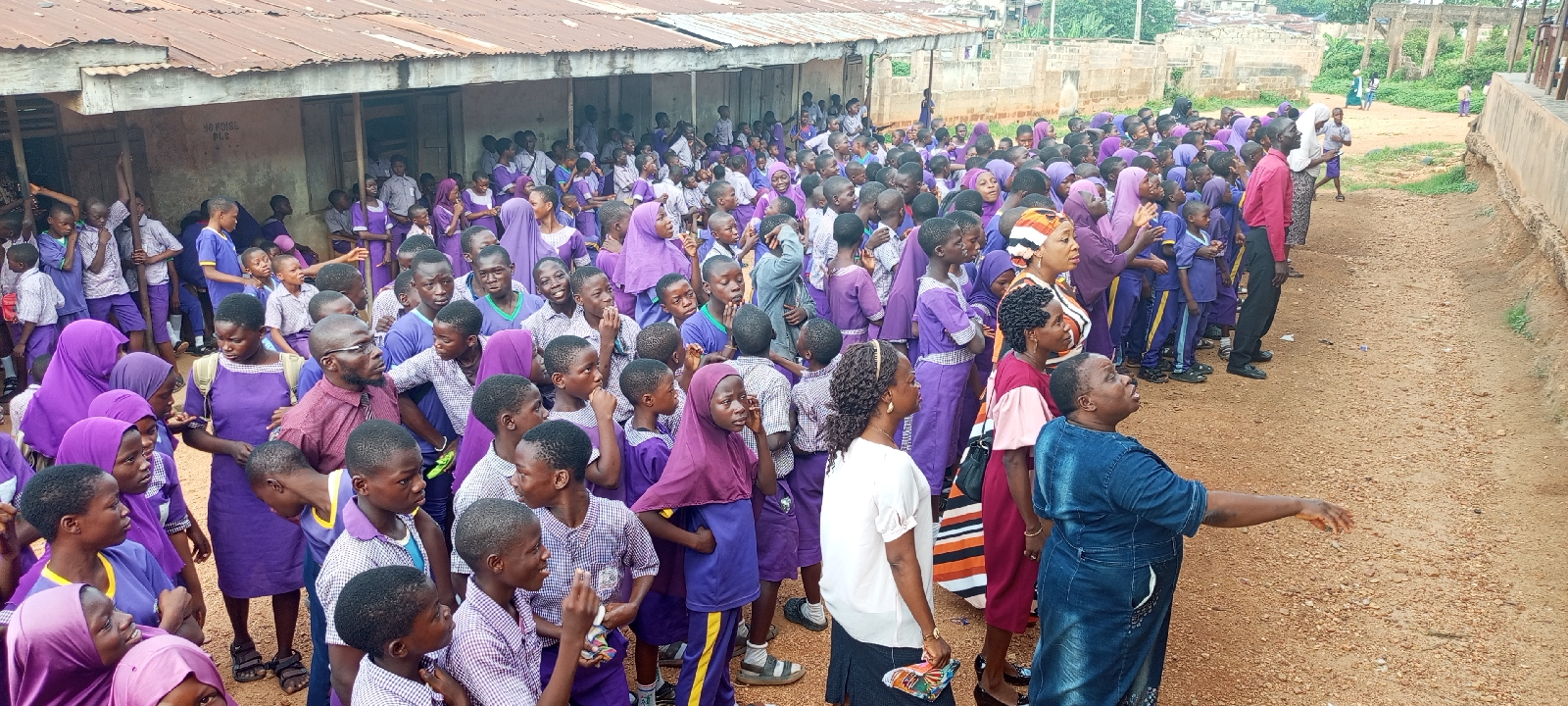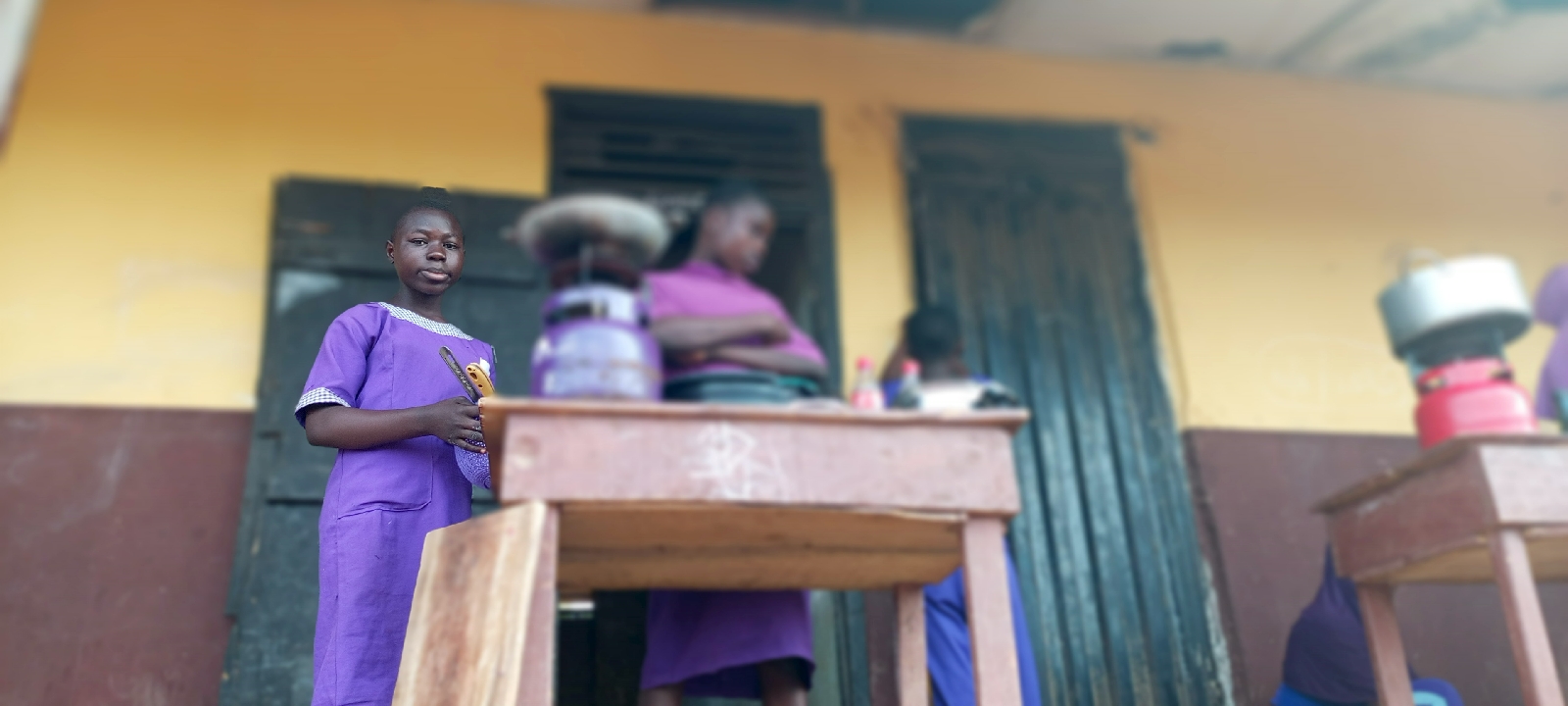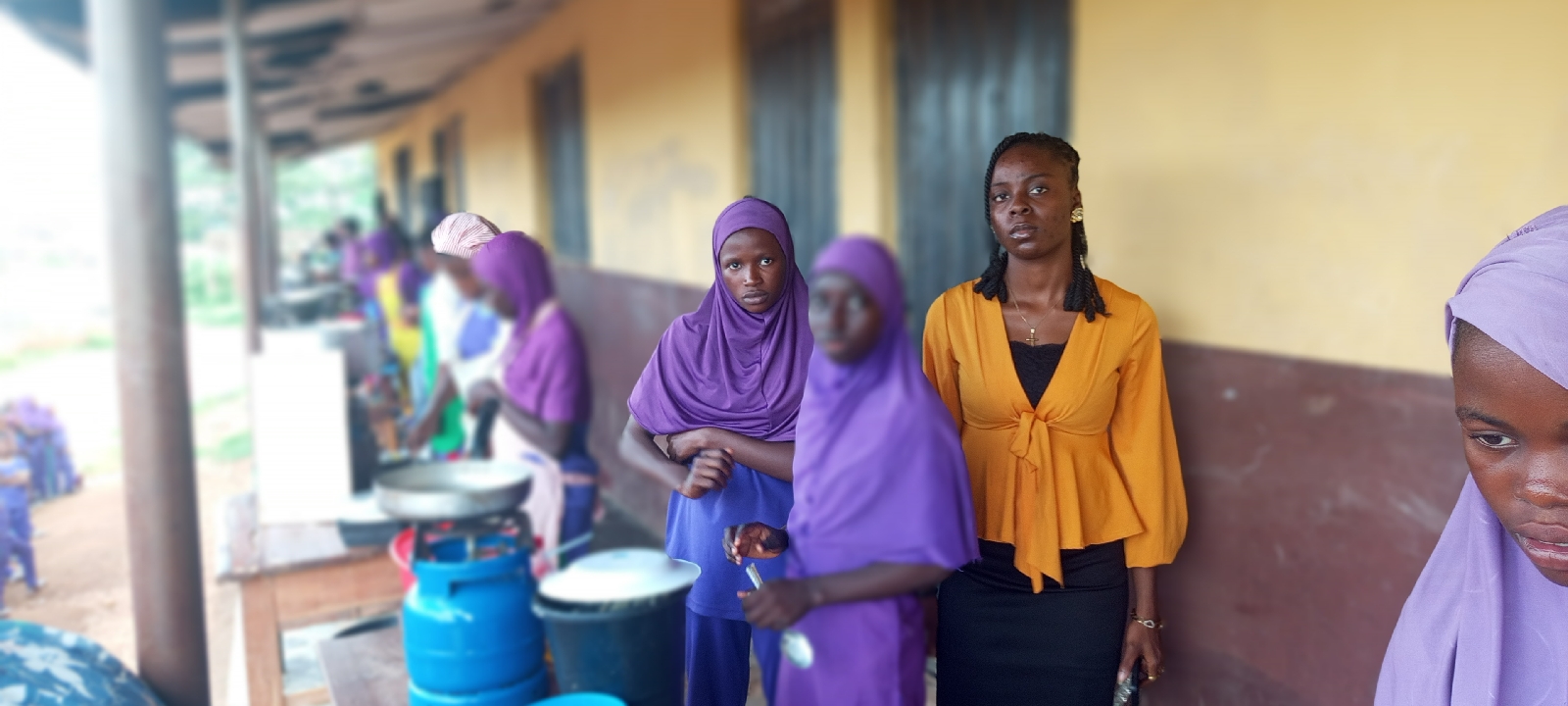Oyemal Film's Production®
Oyemal life
Followers
FIVE YEARS ON REMEMBERING: For SENATOR, ABIOLA ADEYEMI AJIMOBI
ELETA HIGH SCHOOL 'JNR' FOOD COMPETITION
ILORIN IS NOT AWUSA OR FULANI TERRITORY
The Origin of Ilorin: A Historical Insight
"Ilorin is not a Hausa or Fulani territory. Hundreds of years ago, Oko-Erin, or 'Elephant Forest,' was home to brave hunters like Òjó Oníṣekúṣe from Ijesha and Ẹ̀mìńlá from Ìlá-Ọ̀ràngún."
"Ọláderin, from Oyo Alaafin, was the first to settle here. His hut became a hub for hunters, and the name 'Ilorin' originated from the sharpening stone they used for their machetes."
"As people joined Ọláderin, Ilorin expanded. It was initially an Oyo settlement, with no other tribes present. Over time, leadership passed from Ọláderin to his descendants, eventually to Àfọ̀njá, a powerful warlord."
"Afonja's quest for power led him to invite Fulani Alfa, Alimi, for support. This alliance shifted the balance, with Hausa and Fulani presence growing. Despite Afonja's initial dominance, Alimi and his followers eventually
"Thus, Ilorin's complex history began as a Yoruba settlement and evolved through significant conflicts and alliances. Today, it's a blend of diverse cultures, but its roots remain deeply Yoruba."
Oyemal Film's Production®: A 38-Years-Old Zookeeper Impregnated A Female Ape ...
YORUBA HISTORY THE STORE OF OYOTUNJI: A YORUBA (West Africa) KINGDOM IN UNITED STATE OF AMERICA
THE STORY OF OYOTUNJI: A YORUBA (West Africa) KINGDOM IN UNITED STATES OF AMERICA
Oyotunji African Village is a village located near Sheldon, Beaufort County, South Carolina that was founded by Oba Efuntola Oseijeman Adelabu Adefunmi I in 1970. Oyotunji village is named after the Oyo empire, a pre-colonial Yoruba kingdom lasting from the 1300s until the early 1800s in what is now southwestern Nigeria. The name literally means “O̩yo̩ returns” or “O̩yo̩ rises again” or “O̩yo̩ resurrects” referring to the African Yoruba kingdom of Oyo, now rising in a new form near the South Carolina seashore.
Oyotunji village covers 27 acres (11 ha) and has a Yoruba temple which was moved from Harlem, New York to its present location in 1960. It was originally intended to be located in Savannah, Georgia, but was eventually settled into its current position after disputes with neighbors in Sheldon proper, over drumming and tourists.
HOW OBA EFUNTOLA ADEFUNMI I FOUNDED OYOTUNJI
During the slave trade era, many Africans were taken as slaves abroad. While going, some left with their culture and tradition which they continued within the foreign land where they found themselves. They continued with the culture and tradition of their fathers so as to maintain their identity.
The Yorubas in slavery are among the Africans that maintained their culture in the strange land and it was handed down to their children from generation to generation.
Many of their children, after the abolition of the slave trade, have married children of their former masters thus having children of mixed blood, that notwithstanding, they still carry on with their African culture in the foreign land since most of them cannot trace their root back to Africa.
The Yoruba culture has been one of the prominent and most celebrated one throughout the world till date. In the faraway United States of America, there is a Yoruba community named O̩yo̩tunji African Village. It is located near Sheldon, Beaufort County, South Carolina.
O̩yo̩tunji is regarded as North America’s oldest authentic African village. It was founded in 1970 and is the first intentional community in North America, based on the culture of the Yoruba and Benin tribes of West Africa.
It has survived 51years of sustaining the Yoruba traditional sociology and values in the diaspora. The village is named after the O̩yo̩ Empire, and the name literally means “O̩yo̩ returns” or “O̩yo̩ rises again” or “O̩yo̩ resurrects”. The village occupies 27 acres of land.
O̩yo̩tunji was founded by His Royal Highness O̩ba (King) Waja, O̩funto̩la Oseijeman Adelabu Adefunmi I.
Born Walter Eugene King on October 5, 1928, Oba O̩funto̩la Oseijeman Adelabu Adefunmi I, a Detroit native, began studying Afro-Haitian and ancient Egyptian traditions as a teenager. He was further influenced by his contact with the Katherine Dunham Dance Troupe in New York City at the age of 20, an African American modern dance troupe that drew from many cultures within the African Diaspora.
August 26, 1959, O̩ba Waja became the first African born in America to become fully initiated into the Oris̩a-Vodoo African priesthood by African Cubans in Matanzas, Cuba, and became known as Efuntola Osejiman Adefunmi. After his return to the United States, he formed the Yoruba Temple in Harlem in 1960. The temple, committed to preserving African traditions within an American context, was the cultural and religious forerunner of Oyotunji Village.
He later traveled to Haiti where he discovered more about the Yoruba culture. Armed with a new understanding of the African culture, he found the order of Damballah Hwedo, Ancestor Priests in Harlem New York.
This marked the beginning of the spread of the Yoruba religion and culture among African-Americans. He later founded the Sàngó Temple in New York and incorporated the African Theological Arch Ministry in 1960. The Sàngó Temple was relocated and renamed the Yoruba Temple.
With the rise of black nationalism in the 1960s, King began to envision the construction of a separate African American nation that would institutionalize and commemorate ancestral traditions. In June of 1970, he fulfilled this vision with the creation of Oyotunji African Village.
It was during this time that he also established a new lineage of the priesthood, Orisha Vodoo, to emphasize the tradition’s African roots. Today, over 300 priests have been initiated into this lineage and the African Theological Archministry, founded by Oba O̩funto̩la Oseijeman Adelabu Adefunmi I in 1966, now serves as the umbrella organization for the Village.
To further his knowledge of Yoruba culture, he traveled to Abeokuta in Nigeria in 1972 where he was initiated into the Ifa priesthood by the Oluwo of Ije̩un at Abeokuta, Ogun state, in August of 1972. He was later proclaimed Alase̩ (Oba-King) of the Yoruba of North America at O̩yo̩tunji Village in 1972.
In its early years, Oyotunji Village was home to as many as two hundred people. Today, its residential community consists of few African American families, governed by an oba (king) and the community’s appointed council.
Each family is committed to the teachings of the Yoruba tradition, which include a religious understanding of the world as comprised primarily of the “energies” of the Supreme Being Olodumare, the orisha deities, and the ancestral spirits. This religious world is maintained spiritually through rituals, chants, music, sacrifice, and annual ceremonies.
Oba Efuntola Osejiman Adefunmi passed away on Thursday, February 10th, 2005 at O̩yo̩tunji African Village in Beaufort County, South Carolina. Since Adefunmi’s death in 2005, the village has been led by his son, the fourteenth of twenty-two children of Oba Efuntola Osejiman Adefunmi, till date.
The O̩ba title is referred to as “O̩lo̩yotunji” of O̩yo̩tunji.
YORUBA HISTORY History Of Ile-Ogbo Town
History Of Ile-Ogbo Town
Ileogbo is the headquarters of Aiyedire Local Government in Osun State, Nigeria. It is situated midway between Ibadan and Osogbo, the capitals of Oyo and Osun State. Ibadan is about 44 km to the south of Ileogbo while Osogbo is about 42 km to its north, Oyo 40 km to its west, while Gbongan and Ife are located to the east of the town.
The name Ileogbo comes from an old Yoruba folk tale that the people in this town had a very long life span. Ileogbo means the land of the old. The settlers in this town used to have a saying "Ile Ogbo mi ni mo de yi" (meaning the place where I will live till I am very old), and the name was later shortened to Ileogbo.
Ileogbo is one of the famous Yoruba land with its famous cultural activities and tradition,
Ore (ileogbo Ilu ore, omo arepo panda) said to be the protector of ileogbo citizen both home and abroad. Ore festival comes once a year and it attracts people far and wide. Ore tree is as strange as finding a lion in a hole dug in the ground that harbors a rat. When you account for the mother of whom her child's biography is shoddy, its sound unbelievable. But such is the feature of the cradle of a sacred Oore Tree located in Ileogbo.
Ileogbo, inarguably is a product of Ore Tree. The tree, because of its peculiarity, is a pointer to the seating of Ileogbo, the headquarters of Ayedire Local Government in Osun State. The tree life span is uncertain as the first settlers are younger than Ore tree.
The tree was located circa 1840 subsequent to a spiritual consultation with oracle by Kuseela, the only surviving Prince of the war between Fulani and Ileogbo in 1822. Ileogbo was checkmated by Fulanis in 1822, thus, the former site became desolated. After the clash between the troops of Alaafin and the Fulanis in Osogbo in 1840, tranquility returned to the affected Yoruba towns, Ileogbo inclusive. The development triggered Kuseela, consulted an oracle and was divined that he stops, with his entourage where ever he finds a tree tied with white cloth. It was divined that he, with his people shall organize a prosperous kingdom.
Tradition had it that the tree is manned by a male (Baba Abore) and a female (Iya Abore) appointed on the advice of the king. One of the past Iya Abore from Olukoun's compound nicknamed the tree Alhaja Jabaru. This name is not unconnected with the female spirit the tree is said to shelter. Some traditionalists considered Ore as a strong protection against any havoc in Ileogbo. The tree does not shed its leaves under its shade.
Eegun festival (masquerade) it is festivity that draws people from other towns and cities to Ileogbo.
Igbo festival is a must see tradition where young and old, men and women, boys and girls loyal to Igbo festival will be flogging themselves publicly in the city center.
Ileogbo has some private and public secondary schools like Luther King’s college ileogbo, Community High School, Ileogbo, African church grammar school, kuta/ileogbo others are Royal ambassador international college, ileogbo, Omoloye group of schools, ileogbo, Daarul-Hikmah Islamic School, Glorious group of schools, ileogbo and lots more
Aiyedire is a Local Government Area, one of the thirty Local Government Areas in Osun State, Nigeria. Its headquarters is located at 1, Col Ogunkanmi Road in the town of Ileogbo at 7°47′00″N 4°12′00″E. Hon. Adeboye Mukaila Oladejo had been its Chairman since 2017.
Aiyedire Local Government Area is divided into four districts namely Ile Ogbo, Kuta, Oke Osun (Alabata), and Olupona. For efficient administration purposes, Aiyedire South, a Local Council Development Area (LCDA) was created out of Aiyedire and headed by Hon. Olufemi Idowu.
This Local Government Area is located in the western axis of Osun state. It is bounded by Ejigbo, Ola Oluwa, Irewole, Ayedaade and Iwo Local Government Areas. It has an area of 262 km² and a population of 75,846 at the 2006 national census. It features two distinct seasons, the dry and rainy seasons. The average temperature of Aiyedire is put at 28.5° centigrade while the humidity of the area is estimated at 60 percent. Wind speed across Aiyedire is put at 10 km/h.
Farming is the predominant economic activity. Cocoa is a major cash crop cultivated in the area solely or in combination with other agricultural crops such as coffee, cassava, palm oil, kola nut, maize, pineapple and yam.
Trade is an important feature of the economic lives of the people with markets such as the Alaya main market and the Mosun market providing access for the exchange of a wide range of goods and services. Hunting and crop cultivation are other important economic enterprises engaged by the locals.
Sacred Idi-Oore Tree
The tree is famed a pointer to the seating of Ileogbo, the headquarters of Ayedire Local Government in Osun State. The tree life span is uncertain as the first settlers are younger than it. The tree was located circa 1840 subsequent to a spiritual consultation with oracle by Prince Kuseela, the only surviving monarch from the war between Fulani and Ileogbo in 1822 where they were defeated. In 1840, as tranquility returned, it triggered Kuseela, to consult an oracle for a new abode as the former settlement was desolate. The oracle divined that he stops, with his entourage where ever he finds a tree tied with white cloth. It was divined that he, with his people shall organize a prosperous kingdom. Prince Kuseela contacted the tree, weeded its surrounding, settled near at Akinmoyero`s compound and invited people from far and near and subsequently multiplied to about eighty two compounds with numerous suburb.
Tradition had it that the tree is manned by a male (Baba Abore) and a female (Iya Abore) appointed on the advice of the king. One of the past Iya Abore from Olukoun`s compound nicknamed the tree Alhaja Jabaru. This name is not unconnected with the female spirit the tree is said to shelter. Some traditionalists considered Oore as a strong protection against any havoc in Ileogbo. The tree does not shed its leaves under its shade.
Cultural activities
Anlugbua is celebrated annually. Anlugbua Akindele, a famous hunter and warrior was a progenitor that led his people from Orile-Owu to Owu-Kuta, where they are presently settled. He left Orile-Owu because he was not given the chance to reign after his father’s passage. His younger brother was made to ascend the throne, which angered him. So, he left and later settled in a place called Ikutamiti (I evaded death). It is Ikutamiti that was shortened to Kuta. After a reign of 300 years, he decided to sink to the ground, instead of dying physically. The spot where he entered into the ground is where is annually converged to celebrate. The place is now a local historical site.
The shrine is a sacred groove about three kilometres away from the town and inaccessible by vehicle and tucked inside the Anlugbua forest. Some of the rites are the sacrifices of live ram and dog in addition to pounded yam and okro/ogbono soup at the shrine. Persons who wear certain tribal marks called keke are forbidden from entering Anlugbua’s.
YORUBA HISTORY BRIEF History Of"Iwo Land In Osun State"
BRIEF HISTORY OF IWO LAND IN OSUN STATE
Iwo is one of the ancient towns in Yorubaland. Its early history like the history of most Yoruba kingdoms, started at Ile-Ife early in the 11th century. Tradition relate that Adekola Telu, son of the sixteenth Ooni of Ife, Queen Luwo Gbagida, who migrated from Obalooran’s compound in Ile-Ife after the death of his mother.
Prince Adekola Telu left Ile-Ife with a host of attendants headed to the unknown when they left Ile-Ife. However, his first settlement was at a place called Ogundigbaro which was a place located at the confluence of River Oba and River Osun. After a number of years at this settlement, they were forced to leave the place due to constant flooding.
After consultation with Ifa Oracle they moved to Erunmu District where they could not remain for a long time because of the depredation of wild animals around the area (Alademomi Kenyan). The sojourners then moved to Igbo-Orita from where, after a long time they proceeded to settle finally at Ile-Iwo. It's claimed that Adekola Telu died at Igbo Orita. The site was a distance of about six (6) kilometres from the centre of the preset Iwo (Ibadan Iwo Garage).
Three descendants of Telu reigned here. They were Rounmu (who probably led the group there), ganfenumodi and Jikanmu (who had the most eventful reign). A separate account stated that while it was epidemic that sent them packing, they consulted Ifa oracle before leaving. Ifa therefore ordered them to leave Igbo Orita for a place where Eye Odidere (Parrot) abounded. It was on their way that Jikanmu fell sick and was being carried along by a man named Aimaku. Gossip House
As fate would have it, Jikanmu eventually gave up the ghost very near a river, which has today being named Adeke River (River where the King died – Obadeke) today. The man who was credited for founding the present Iwo was Olumade Parin. Parin had taken over from Jikanmu after his death, and had led the people to where Parrot is abounded. It was on their way that Jikanmu fell sick and was being carried along by a man named Aimaku.
The man who was credited for founding the present Iwo was Olumade Parin. Parin had taken over from Jikanmu after his death, and had led the people to where Parrot is abounded. That was how Parin became the first Oluwo in around 17th century.
Their kings are great by the successes achieved in war time. Their nobles show their nobility by their achievements at the war front. However, while Iwo shared similar sentiment of having a strong connection with Ile-Ife, the cradle of the Yoruba race, the reason for their migration is far from wars but that of direct and willing migration from Ile-Ife. Iwo is located round towns and major settlements which includes Asa, Oluponna, Ile-Ogbo, Ogbaagba, Kuta, Telemu, Ikire-Ile, Bode-Osi, Ajagba, Ajagunlase and Ikonifin just to mention a few.
The rulers of these aforementioned settlements pay traditional homage to the Oluwo of Iwoland, the paramount ruler in the area. It must therefore be noted with satisfaction that people of Iwo and its environs co-exist peacefully together while believers of Christian, Islamic and Traditional religions intermingle among one another without problem.
May God Bless Iwo Land 🙏
YORUBA HISTORY Brief History "Ayede Ekiti"
AYEDE EKITI
Ayede Ekiti is a town in Oye LGA of Ekiti state, South West Nigeria. The town was said to have been founded by a warrior, General Izimo from Iye-Ekiti and a mercenary (hired fighter), Atta Esubiyi (Echubiyi- This darkness or invisible person) from Ibadan Kingdom, a statement on Ekiti govt website revealed.
History has it that some Igalas migrated to Ibadan many years ago, and many of such people have 3 tribal marks like Kogi Igalas. Esubiyi (Echubiyi) in Igala means darkness or invisible as hired fighters can demonstrate different powers, thus the name. Further more, Attah Esubiyi was said to have derived the name Atta from his war friend and colleague, Atta Igala (probably of Attah Royal house) from Bida Nupe (recall Prince Echude, son of Attah Ayegba who formed Nupe kingdom as in my previous post).
This Bida Igala warrior who fought along with Attah Esubiyi came with his Igala followers were part of the Ayede Ekiti community first settlers. But whether Attah Esubiyi was of Igala origin or not, his fighting colleague whom he adopted his name as well as his followers are Igalas, and their descendants are still members of Ayede Ekiti town.
The title of the traditional ruler of Ayede Ekiti till date is Attah of Ayede.
And so, our Ayede Ekiti Igala brothers and sisters, blood is different from water, and we are the same Igala blood no matter how long we were separated.
We will reconnect soon and separate never again. Abomi Igala chaka, welcome to South West Nigeria.
Credit to Moses Imisioluwa Olaoke
Thank you for the brief history
Signs To Know When You're In The Right Relationship...
1. You can read one another extremely well.
In a healthy and strong relationship, you reach a point where the two of you know each other wholeheartedly. You can figure out if something is really bothering him or not and vice versa. He might not even need to say it, but for example, you can just tell by the way he talks.
2. You are very comfortable with one another.
You know you're in the right relationship when you don't shy out around him and you're completely yourself. Both of you act comfortable around each other and seeking perfection is just not your thing.
3. Your Lives are not dependent on one another.
Another sign you're in the right relationship, is when both of you have your separate lives and appreciate some privacy. It's so healthy for a couple not to interfere in each other's lives and still spend time separately.
4. You bring out the best in each others!
When both of you encourage one another to be better persons in general, then you know you're in the right relationship. Both of you understand work commitments and totally push one another to a better future without being selfish.
5. You show each other complete respect.
Because all couples fight, it's very important that both of you respect each other during any kind of argument. If you don't cross that borderline of decency and appreciate each others opinions, then it's the right kind of relationship.
6. You always remember the little things.
You and your partner should always remember the little things that come across your paths. You should also know that in this fast-paced life, we can be overwhelmed and unintentionally forget about things. If you're in the right relationship, you will make the sweet insignificant moments count.
7. You trust each others completely.
The best relationships are always built on mutual trust. Both of you should never keep secrets from one another, because trust is simply the backbone of any relationship. If you do trust your partner, then this relationship is worth keeping.
8. Sorry is not the hardest word in the relationship.
One important sign you're in the right relationship, is that both of you know how to say sorry and apologize. If you have done something that pissed off your loved one, you know creative ways to say sorry and make them smile.
9. Your support for one another is unconditional.
Being there for each other is one of the things that can tell you you're in the right relationship! Standing by each other in rough times will just bring you closer to each other, increasing the bond you have more and more.
10. Acknowledging and accepting each other's differences.
Accepting each other's differences is what a healthy relationship is all about. People have different interests, opinions and hobbies. If the two of you understand this clearly, then you can guarantee you're in the right relationship.
11. You forgive and forget.
Nobody is perfect and we all have a past. If you can let go of the past and still enjoy being together, then this shows you're in the right relationship.
FIVE YEARS ON REMEMBERING: For SENATOR, ABIOLA ADEYEMI AJIMOBI
Five Years On: Remembering Senator Abiola Adeyemi Ajimobi Today marks five years since the passing of an extraordinary man, Sena...

-
THE OMO OLOORE STORIES STORY 3:THE PHONE IS TRULY MINE While I was serving as the Commissioner for Youth and Sports, every time Shooting ...
-
Food Competition Between Eleta High School 'JNR' Student Happened Today Wed, June 2025 we'r...
